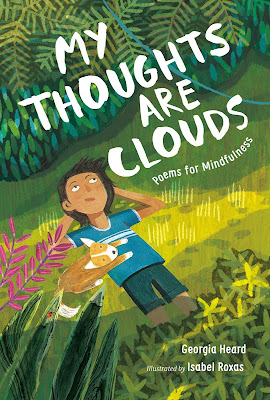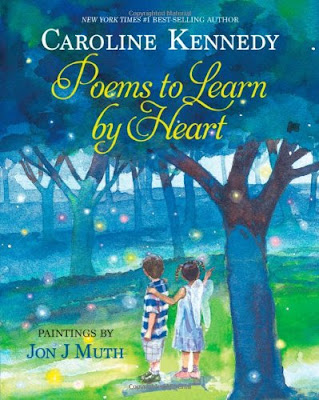The True Story of the 3 Little Pigs
Bibliography:
Scieszka, Jon and Lane Smith. The True Story of the 3 Little Pigs. New York: Viking, 1989. ISBN: 9780140544510Plot Summary:
 Alexander T. Wolf sets the record straight about what really happened in this alternate account of the Three Little Pigs tale. The falsely accused wolf explains how the whole ordeal was just a misunderstanding and begins by confronting his unfair reputation as the Big Bad Wolf, attributing the unfortunate label to his carnivorous diet. The real story, argues the wolf, begins with a head cold and a cup of sugar. The wolf was innocently baking a cake for his granny when he realized he was out of sugar. He visits his neighbor, the pig in a poorly constructed house of straw, and accidentally blows it down with a sneeze. Seeing that the pig unfortunately died, the wolf decides he mustn’t waste perfectly good food, so he helps himself to a ham dinner. Still in need of a cup of sugar, he arrives at the next pig’s house of sticks, only slightly better constructed by the slightly smarter pig who is busy shaving the hairs on his chinny chin chin. Another accidental sneeze razes the second pig’s house, and the wolf has little choice but to eat another helping of ham. The third pig, as it turns out, is just rude. After refusing to give the wolf a cup of sugar, the pig insults the wolf’s grandmother, which naturally sends the wolf into a sneezy rage. Just as the wolf is huffing and puffing and sneezing and beating on the pig’s door, the cops arrive. Since the truth, borrowing a cup of sugar, doesn’t make for a very good story, the reporters on the scene concoct a much more exciting story about a Big Bad Wolf terrorizing the three little pigs, landing the wolf in jail and securing his infamous (though incorrect) reputation.
Alexander T. Wolf sets the record straight about what really happened in this alternate account of the Three Little Pigs tale. The falsely accused wolf explains how the whole ordeal was just a misunderstanding and begins by confronting his unfair reputation as the Big Bad Wolf, attributing the unfortunate label to his carnivorous diet. The real story, argues the wolf, begins with a head cold and a cup of sugar. The wolf was innocently baking a cake for his granny when he realized he was out of sugar. He visits his neighbor, the pig in a poorly constructed house of straw, and accidentally blows it down with a sneeze. Seeing that the pig unfortunately died, the wolf decides he mustn’t waste perfectly good food, so he helps himself to a ham dinner. Still in need of a cup of sugar, he arrives at the next pig’s house of sticks, only slightly better constructed by the slightly smarter pig who is busy shaving the hairs on his chinny chin chin. Another accidental sneeze razes the second pig’s house, and the wolf has little choice but to eat another helping of ham. The third pig, as it turns out, is just rude. After refusing to give the wolf a cup of sugar, the pig insults the wolf’s grandmother, which naturally sends the wolf into a sneezy rage. Just as the wolf is huffing and puffing and sneezing and beating on the pig’s door, the cops arrive. Since the truth, borrowing a cup of sugar, doesn’t make for a very good story, the reporters on the scene concoct a much more exciting story about a Big Bad Wolf terrorizing the three little pigs, landing the wolf in jail and securing his infamous (though incorrect) reputation.Critical Analysis:
In this fractured folktale, Jon Scieszka invites the reader to question the veracity of the classic tale by reinventing it from the wolf’s point of view. This shift in perspective asks the reader to judge whether or not the wolf is a reliable narrator. The wolf defends himself from the outset by suggesting that the reader empathize with his situation: “Hey, it’s not my fault wolves eat cute little animals like bunnies and sheep and pigs. If cheeseburgers were cute, folks would probably think you were Big and Bad, too.” The tongue-in-cheek, first-person narration takes on a personable, conversational tone, suggesting that the pigs were truly the ones at fault. “Can you believe it? I mean who in his right mind would build a house of straw?” The wolf paints himself as a considerate neighbor who would never dream of disrespecting the pigs, and when he knocks on the flimsy straw door and it falls in, says, “I didn’t want to just walk into someone else’s house.”Lane Smith’s beastly illustrations highlight the wolf’s carnivorous nature, depicting a towering hamburger layered with furry animal parts, a mouse’s tail jutting out from under a slice of cheese, assorted paws and whiskered noses poking out from the sides. Even in his grandmother’s cake, the illustration shows a pair of rabbit ears protruding from the bowl of ingredients. Smith’s hazy watercolors create a surreal and explosive effect, blasting straw, twigs, and pig hooves across the page. The bespectacled wolf appears in his sweater and bow tie, a model citizen just trying to make his grandmother a cake. The pigs, on the other hand, are barely shown at all except for their curly-tailed bottoms sticking out from the rubble. The third, ill-mannered pig looks evil and menacing as he peers out the tiny window of his brick house. Finally, as the cops arrive, the illustration shows how the scene must have looked from an outside observer. An illustration of The Daily Pig newspaper features multiple anti-wolf articles on the front page, clearly an example of bias and media spin.
Review Excerpts:
“Smith's highly imaginative watercolors eschew realism, further updating the tale, though some may find their urbane stylization and intentionally static quality mystifyingly adult. Designed with uncommon flair, this alternative fable is both fetching and glib.” Publishers Weekly“Lane Smith's sepia-toned illustrations spring to life, with added animation and wonderful movement between scenes.” School Library Journal
“The True Story of the 3 Little Pigs! is my picture book take on the unreliable narrator. It’s a tribute to Henry James’s Turn of the Screw, Vladimir Nabokov’s crazy narrator in Pale Fire, and every car commercial you’ve ever seen. It’s what happens when anyone tells a story. It’s what happened when any one of the six Scieszka brothers told their version of how the living room couch got broken. The storyteller ends up looking pretty good.” Jon Scieszka, Horn Book Magazine
Connections:
Invite students to apply their knowledge of traditional tales to create an alternate version from a different point of view.Collect other well-known tales told from unconventional perspectives:
Shaskan, Trisha Speed and Gerald Claude Guerlais. Seriously, Cinderella Is SO Annoying!: The Story of Cinderella as Told by the Wicked Stepmother (The Other Side of the Story). ISBN: 1404870482
Maguire, Gregory. Wicked: The Life and Times of the Wicked Witch of the West. ISBN: 9780061350962
Gather more books by Jon Scieszka:
Scieszka, Jon and Steve Johnson. The Frog Prince, Continued. ISBN: 014054285X
Scieszka, Jon and Lane Smith. The Stinky Cheese Man and Other Fairly Stupid Tales. ISBN: 067084487X



Comments
Post a Comment